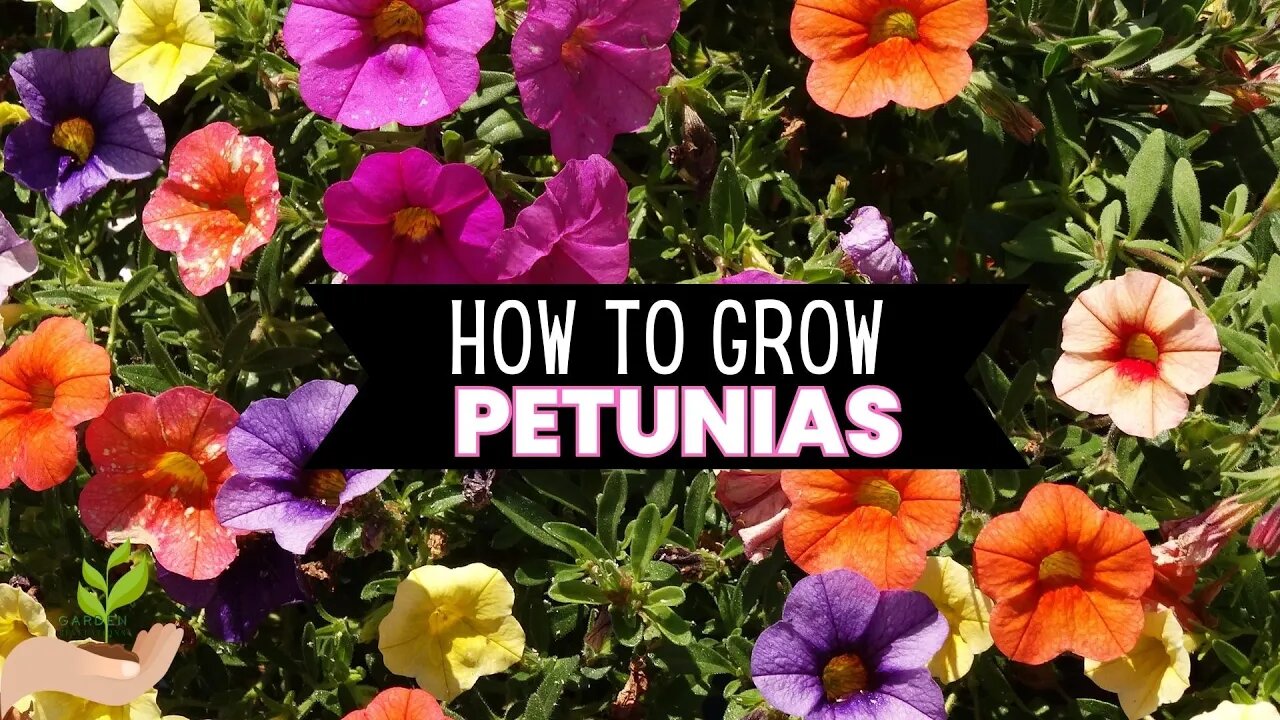Premium Only Content

How to Grow Petunias: A Comprehensive Guide for Vibrant Blooms
Petunias are a garden favorite known for their abundant blooms and vibrant colors. Originating from South America, these flowers have been popular in gardens for centuries. With various types available, petunias can be grown in gardens or containers to suit any outdoor space. In this comprehensive guide, we'll explore the different types of petunias, planting techniques, and essential care tips to help you grow thriving petunias with spectacular blooms.
The Latin name for petunias is Petunia × atkinsiana (also known as Petunia × hybrida), which refers to the standard hybrid garden species. Petunias are annual plants that complete their life cycle in one growing season. They are suitable for USDA growing zones 2 through 11.
Types of Petunias.
Grandiflora Petunias. Grandiflora petunias are perfect for making a bold statement in your garden. However, they may require extra care, as their large, showy blooms are more susceptible to weather damage.
Multiflora Petunias. These petunias feature smaller flowers than Grandiflora varieties but produce more blooms. They are more tolerant of weather fluctuations and ideal for garden beds or containers.
Milliflora Petunias. Compact and prolific bloomers, Milliflora petunias are perfect for small spaces or containers. Their petite flowers create a delicate, elegant display.
Spreading or Wave Petunias. These vigorous, low-growing petunias are ideal for ground covers, hanging baskets, or containers. They spread quickly and produce abundant blooms throughout the season.
Double Petunias. With their lush, double-layered flowers, Double petunias add a touch of luxury and lush color to any garden.
Considering the right type for your garden or container? Consider available space, desired visual impact, and maintenance preferences when selecting the perfect petunia variety. Always check the care tag for your plants before purchasing.
Planting Petunias. Start petunia seeds indoors 10-12 weeks before the last expected frost. Start the seeds in seed trays or pots filled with a high-quality seed starting mix. Lightly press seeds into the soil surface but do not cover them, as petunias need light to germinate. Keep the soil moist and maintain temperatures around 70-75°F to ensure successful germination.
Are you buying transplants from the nursery? Here are two considerations.
Choose compact, well-branched petunia plants with healthy green foliage and no signs of pests or diseases. Use proper transplanting techniques. Gently remove the petunia from its container, taking care not to damage the roots. Plant it in your prepared garden bed or container at the same depth as in the original pot.
Next. Let's look at how to plant petunias in the ground or containers.
Planting in the ground. Prepare your soil and amendments. Petunias prefer well-draining, fertile soil with a pH between 6 and 7. Amend the soil with compost or herbivore manure to increase fertility and drainage. Plant petunias 10-12 inches apart to ensure proper air circulation and prevent overcrowding.
Planting in containers. Select a container with drainage holes to prevent waterlogging. Consider the mature size of your petunias when choosing a container size. Use a high-quality, well-draining potting mix in your container to promote healthy growth. You may add perlite or vermiculite to improve drainage further.
Caring for Petunias. What's the proper watering frequency and technique? Water petunias thoroughly and allow the soil to dry slightly between waterings. Container-grown petunias may require more frequent watering than those planted in the ground. Avoiding common watering problems. Overwatering can lead to root rot. On the other hand, underwatering may cause wilting and reduced blooms. Monitor soil moisture and adjust your watering schedule accordingly.
Fertilizing. Use a balanced, slow-release fertilizer or a water-soluble fertilizer specifically formulated for flowering plants. Apply fertilizer according to the package instructions, typically every 4-6 weeks during the growing season.
Pruning and deadheading. Regularly remove spent flowers (deadheading) to encourage continuous blooming. Pinch back leggy or overgrown stems to maintain a compact, bushy appearance. Prune petunias in late spring or early summer removes damaged or diseased stems. Lightly trim the plants in midsummer to encourage a flush of new growth and blooms.
Pest and disease management. Common pests and diseases include aphids, whiteflies, and slugs may attack petunias. Diseases such as powdery mildew, gray mold, and root rot can also affect petunias. Maintain proper plant spacing and avoid overwatering to reduce the risk of pests and diseases.
Connect:
Facebook: https://www.facebook.com/TayloesLawnCare
Web: https://www.tayloeslawncare.com
MeWe: https://mewe.com/p/diyhomegarden
Image and music licensed via Canva Pro
-
 0:57
0:57
Garden Revelations
1 year ago10 Best Evergreen Shrubs for Year-long Color and Texture
111 -
 16:06
16:06
The Rubin Report
14 hours agoProof the Islamist Threat in England Can No Longer Be Ignored | Winston Marshall
91.1K82 -
 2:07:07
2:07:07
Robert Gouveia
11 hours agoFBI Files Coverup! Bondi FURIOUS; SCOTUS Stops Judge; Special Counsel; FBI Does
116K86 -
 56:15
56:15
Candace Show Podcast
12 hours agoBREAKING: My FIRST Prison Phone Call With Harvey Weinstein | Candace Ep 153
173K113 -
 1:56:39
1:56:39
Flyover Conservatives
10 hours agoROBIN D. BULLOCK | Prophetic Warning: 2030 Is Up for Grabs – If We Don’t Act Now, Disaster Awaits! | FOC SHOW
60.8K12 -
 2:13:11
2:13:11
megimu32
8 hours agoON THE SUBJECT: The Epstein List & Disney Channel Original Movies Nostalgia!!
46.6K6 -
 9:06
9:06
Colion Noir
17 hours agoKid With Gun Shoots & Kills 2 Armed Robbers During Home Invasion
58.3K13 -
 54:28
54:28
LFA TV
1 day agoUnjust Man | TRUMPET DAILY 2.27.25 7PM
59.5K5 -
 1:36:39
1:36:39
Redacted News
11 hours agoBOMBSHELL EPSTEIN SH*T SHOW JUST DROPPED ON WASHINGTON, WHAT IS THIS? | Redacted w Clayton Morris
184K307 -
 2:03:31
2:03:31
Revenge of the Cis
13 hours agoEpisode 1453: Fat & Fit
68.3K9